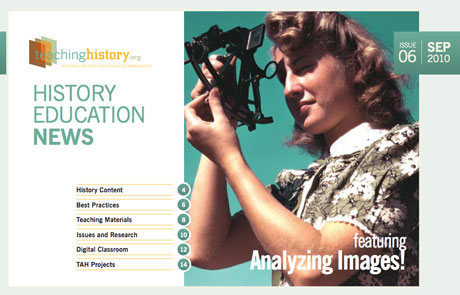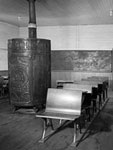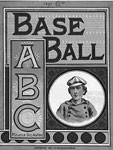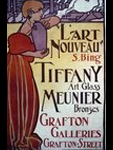This is the fifth in a series of film reviews reprinted from the Journal of American History. These reviews model ways of looking critically at popular films, documentaries, miniseries, and other history-based features.
Directed by Ken Burns and Lynn Novick, The Tenth Inning is a two-part, four-hour sequel to Baseball (1994), the 18-and-a-half-hour long, Emmy Award–winning documentary that was the most-watched series in public television history. In the pages of the Journal of American History 16 years ago the historian George B. Kirsch concluded his review of Baseball: “On balance, for lovers of the national pastime, Baseball is a stand-up triple. For social historians, it is a broken-bat single” (Dec. 1995, p. 1316). It was a fair, well-supported assessment.
Other reviewers were more critical; some were scathing. The hall-of-fame baseball writer Jerome Holtzman declared that Baseball was “laborious viewing,” “pretentious and repetitious,” rife with “intellectual nonsense” (”Alas, Burns’ ’Baseball’ Provides Rest for the Weary,” Chicago Tribune, Sept. 25, 1994, sec. 3, p. 15). Still, many people, including me, were impressed with what Burns and his collaborators had accomplished. Although it was not great history (and we should be mindful not to assess a documentary by the standards we use to critique scholarship), it was artful storytelling on an epic scale. But like the former slugger Mark McGwire, who in 2005 repeatedly told the House Oversight and Government Reform Committee that he was “not here to talk about the past” when its members asked him about steroids, I am not here to re-review Baseball.
That is, in terms of style and technique, The Tenth Inning is a typical Ken Burns film: ambitious, organized, thoughtful, engaging, sometimes even beautiful.
The Tenth Inning is a worthy addition to a remarkable body of work. Burns and company have yet again masterfully told a rich, dramatic story well suited for their medium (television) and their audience (PBS viewers and students of all ages). They do so by synthesizing a master narrative (read by the actor Keith David) with interesting images (photos and video), the insights of knowledgeable commentators (some of whom appeared in Baseball, such as the sportswriter Thomas Boswell, historian Doris Kearns Goodwin, and columnist George Will; some of whom will be new to most viewers, such as Marcos Breton of the Sacramento Bee and Howard Bryant of ESPN) and a handful of baseball men (pitcher Pedro Martínez and manager Joe Torre), and evocative, well-chosen music (the hard-driving “Let There Be Drums” is frequently used to good effect). That is, in terms of style and technique, The Tenth Inning is a typical Ken Burns film: ambitious, organized, thoughtful, engaging, sometimes even beautiful.
The Tenth Inning covers 17 tumultuous years of Major League Baseball history, its many ups and downs, heroics and scandals. The film’s prologue explains that, even after 150 years, baseball during the 1990s and 2000s “remained remarkably unchanged.” In his next breath, Keith David notes that it had also changed: there were Major League teams in new cities (Denver, Miami, Phoenix, and Tampa Bay); interleague play and an expanded postseason; increased salaries, attendance, home run totals, and numbers of Latin American and Asian players; a nearly catastrophic labor-management conflict; and a pervasive problem with ballplayers using illicit performance-enhancing drugs. And yet, on the field, these years witnessed some remarkable moments and accomplishments.
The film seems to argue that Gaylord Perry‘s infamous spitballs and Albert Belle‘s corked bats were the moral equivalent of Jose Canseco’s steroid juicing.
Thereafter, the “Top of the Tenth” depicts the seventh game of the 1992 National League Championship Series, when a young, svelte, multitalented leftfielder for the Pittsburgh Pirates named Barry Bonds narrowly missed throwing out at home plate a plodding Atlanta Braves base runner, Sid Bream, who scored the game- and pennant-winning run. The film then examines Bonds’s complex, surly personality and, later, how and why he ended up a San Francisco Giant. It also not-so-implicitly compares/contrasts him with another gifted son of a former Major Leaguer, Ken Griffey Jr., who played with “joyous abandon” and represented the “very best the game had to offer.”
Next, the film chronicles the vexing, complicated issue of steroid use among Major Leaguers, beginning in the 1980s, but which the film puts in a longer history of baseball cheating, or what the broadcaster Keith Olbermann describes as “artful deceptions.” The film seems to argue that Gaylord Perry’s infamous spitballs and Albert Belle’s corked bats were the moral equivalent of Jose Canseco’s steroid juicing. It adds that ours is a performance-enhancing culture. Steroids, the film makes clear, was the specter haunting baseball during most of these years.
There was, however, another cloud darkening Major League Baseball. A section entitled “Millionaires vs. Billionaires” recounts the disastrous 1994 labor-management impasse between two groups with an acrimonious history and relationship. The subsequent work stoppage cost the owners $700 million, the players $250 million, and fans over 900 regular-season games and the World Series. Howard Bryant notes that the labor conflict, which ended in April 1995 when federal judge Sonia Sotomayor issued a preliminary injunction against Major League Baseball that basically restored the expired collective bargaining agreement, proved “how little they [the owners and the ballplayers] thought of the public.” One angry fan spoke for many: “I have no sympathy for either party.”
The film makes clear that baseball is resilient.
But the film makes clear that baseball is resilient. Almost as if on cue, the modest, workman-like Cal Ripken Jr. of the Baltimore Orioles, who was approaching Lou Gehrig’s record of 2,130 consecutive games played, helped save the day by refocusing media and fan attention on the field. After Ripken surpassed Gehrig’s mark in September 1995, a fan in Baltimore held aloft a handmade sign that read “Cal Thanks for Saving Baseball.” Soon thereafter, the Atlanta Braves’s brilliant pitching trio of Greg Maddux, Tom Glavine, and John Smoltz led their team to its first World Series title since 1954. The next season, the New York Yankees hired veteran manager Joe Torre, who, along with shortstop Derek Jeter, relief pitcher Mariano Rivera (one of the many Latin American ballplayers to achieve stardom during the era), and other talented, highly paid ballplayers, helped the Yankees win four of the next five World Series.
Amid all this, home runs were flying in record numbers. So it makes sense that the film focuses on the extraordinary 1998 Mark McGwire–Sammy Sosa assault on the single-season home run record set by Roger Maris in 1961. Doing so suggests that the game had been fully re-embraced by the American public—even though the Bunyanesque McGwire (who hit a record 70 homers that season, to Sosa’s 66 and Maris’s 61) was openly and unapologetically using Androstenedione, a dietary supplement that increases testosterone levels, because Major League Baseball had not banned its use. Millions of fans and most of the media did not seem to care. “Innocence is beautiful sometimes,” says Pedro Martínez.
Here, in a two-minute nutshell (capped by the commentator Mike Barnicle’s meditation on the time he has spent with the Red Sox), is the film’s central conceit: the past and present mingle, continuity and change.
The “Bottom of the Tenth,” the film’s second episode, begins in contemporary Boston, with the sun rising on an empty Fenway Park and baseball chatter on sports radio shows. The scene briefly changes, temporally; viewers are transported into the past, via black-and-white images of historic Red Sox players and fans and the crackling of old radio broadcasts. Here, in a two-minute nutshell (capped by the commentator Mike Barnicle’s meditation on the time he has spent with the Red Sox), is the film’s central conceit: the past and present mingle, continuity and change. Here also is Burns’s true love and, it turns out, the film’s raison d’être, to which I shall return.
The episode features captivating profiles of Pedro Martínez, one of the era’s dominant pitchers (others include Maddux, Rivera, Randy Johnson, and Roger Clemens), and of superstar Japanese outfielder Ichiro Suzuki, whose hitting and fielding accomplishments earned him the 2001 American League Rookie of the Year and Most Valuable Player awards. In different ways, both Martínez and Ichiro (as he is known) represent globalization. The Dominican Republic–born Martínez, despite his brilliance, stands for the thousands of Latin Americans (many of whom are products of Caribbean-based baseball “academies” run by U.S. teams) striving to make the Majors. In Ichiro, the editor Gary Hoenig sees the full flowering of globalization, that is,
people elsewhere can take this thing that you played with and invented, and maybe to some degree spoiled with whatever is going on here, and it can go to an entirely different place and be re-created and re-grown, as if it’s a hybrid flower of some kind. Then come back and show you the game maybe in a different way and maybe in a way that it used to be but you haven’t thought of in a long time.
That is, small ball—baseball that relies on speed, spraying the ball to all fields, intelligence—the way things used to be before the long ball became all.
At a time when the country was in shock and pain, baseball, the film argues, was able to provide many people with a welcome distraction, a sense of normalcy, and a connection to the pre-9/11 world and their fellow citizens.
Of course, globalization was also arguably partly responsible for the September 11, 2001, terrorist attacks on New York City and Washington, D.C., the new century’s defining moment. At a time when the country was in shock and pain, baseball, the film argues, “our game,” to use Joe Torre’s phrase, was able to provide many people with a welcome distraction, a sense of normalcy, and a connection to the pre-9/11 world and their fellow citizens.
Less than a month later, Barry Bonds, considerably more muscular than during his days with the Pirates, ended the year with a single-season record 73 home runs, a number that was hard for many fans outside of San Francisco to imagine, let alone to cheer in the aftermath of 9/11. Increasingly, many thought that something was amiss with the game, as “rumors and suspicions about performance-enhancing drugs kept surfacing,” Keith David intones.
At this point, The Tenth Inning recounts the 2002 World Series, in which Bonds’s Giants suffered a surprising loss to the California Angels, and begins to turn its attention to the Boston Red Sox–New York Yankees rivalry, the low point of which (for New Englanders like Burns) was the Red Sox’s loss in game seven of the 2003 American League Championship Series (ALCS), when reserve infielder Aaron Boone hit a game- and pennant-winning home run in the bottom of the eleventh inning. After a brief midwestern interlude to commiserate with long-suffering Chicago Cubs fans and to recount the unfortunate 2003 Steve Bartman foul ball incident, the film returns to the Red Sox and Yankees.
By the middle of the 2000s, rumors and allegations about steroid use in baseball could no longer be ignored.
This is the film’s best, most impassioned section. It introduces us to the ”idiot” Red Sox of 2004, the scrappy, talented band of hirsute brothers who refused to take themselves too seriously. Once again, they were in the ALCS, battling the Yankees, who had added all-star third baseman Alex Rodriguez to their roster and took a 3-0 lead in the best-of-seven series. Nevertheless, thanks to their never-say-die spirit and the clutch hitting of David Ortiz, the Red Sox did the unprecedented: they won four games in a row. In comparison, sweeping the St. Louis Cardinals in the World Series was almost anticlimatic. With Bruce Springsteen’s “Glory Days” pounding in the background, Keith David declares: ”From Bangor, Maine, to New Haven, Connecticut, from Burlington, Vermont, and Charlestown, New Hampshire, to Providence, Rhode Island, millions rejoiced.” It had been 86 hard years since the Red Sox’s last world championship (during which time the Yankees had won 26), and generations of fans experienced something like orgasmic individual and collective catharsis. For some it was a dream come true.
Baseball nightmares were coming true, too. The Tenth Inning’s third-to-last and penultimate sections are about the rampant use of performance-enhancing drugs and the buildup and reactions to Bonds breaking Henry Aaron’s all-time home run record, which he did in 2007. By the middle of the 2000s, rumors and allegations about steroid use in baseball could no longer be ignored. In 2005 Congress investigated the matter, and the recently retired Jose Canseco published Juiced: Wild Times, Rampant ’Roids, Smash Hits, and How Baseball Got Big, in which he admitted his own steroid use and named other users.
Eventually, baseball acted. It commissioned a study, headed by the former senator George Mitchell, to investigate the matter. The “Mitchell report” findings, released in December 2007, were damning, implicating over 80 players as likely steroid users, most notably Roger Clemens, who denied the claims. The retired McGwire eventually admitted he had used steroids for most of his career, including during the 1998 season. It was a sorry spectacle, albeit one that did not seem to have a significant impact on the game’s popularity. “Baseball had a black eye,” Joe Torre admits,
but I’m not sure that everybody should have been named. It’s a sad time, but it’s something we have to deal with, we have to get through it, and hopefully there is sun shining on the other side of this thing, because this game is too beautiful to have a lasting scar on it.
Burns and company seem to agree: the film’s concluding section is entitled “The Sun Shining.” Major League Baseball, which generously cooperated with the filmmakers, could not have asked for a better conclusion, chock-full of ESPN-worthy highlights and a compilation of World Series victory celebrations. Through it all, the game endures. Mike Barnicle (seemingly channeling Burns) gets the last word: “I do love this game. I love being there,” the middle-aged Massachusetts native explains, as the camera fades to an empty Fenway Park at night.
Other than my home, other than being with my family, it is, I can honestly say, the one place I truly feel at home, at peace, comfortable, is at Fenway Park watching the Red Sox play. I always have, through losing years, winning years, I just feel it’s a piece of my home.
The Fenway Park lights are turned off. We hear radio baseball chatter, some of it in Spanish. Boston’s lights twinkle.
Before watching The Tenth Inning on TV, I wondered: why does Baseball need a sequel? Eighteen-and-a-half hours seemed like enough. Moreover, do the math: 150 years of baseball history get 18-and-a-half hours, but 17 years of recent history, which most baseball fans over 30 years old remember, get four?
Burns basically said the same thing many times while promoting Baseball in 1994: that baseball is a way for us to consider who we have been, who we are, and what we value.
Thankfully, the answer to my question can be found on the DVD’s special features, where Burns says: “Let me just lay my cards flat on the table. I think we’ve done this update because the Red Sox won the World Series in 2004.” I appreciate the candor. He adds:
There was something incredibly joyous for those of us in New England to watch our Red Sox finally kind of get the monkey off the back and win the World Series in 2004 and it’s a dramatic story of how they did it. But you also begin to realize that baseball had mirrored us in many other ways, and it was important to begin to gather the threads of what those mirrors were, good and bad.
The mixed metaphor notwithstanding, Burns basically said the same thing many times while promoting Baseball in 1994: that baseball is a way for us to consider who we have been, who we are, and what we value.
In addition to being consistent, Burns has also matured. One way The Tenth Inning is better than Baseball is that it avoids most of the grandiloquent pronouncements found in the 1994 series, which is what Jerome Holtzman meant, I think, when he assailed its “intellectual nonsense.” To the filmmakers’ credit, there is not a lot of that in The Tenth Inning. Burns, Novick, and fellow writer and producer David McMahon understand that baseball is primarily about narrative and numbers, continuity and change; that it is a game, a big business, and a revealing cultural institution, but not always in that order. Rather than overrelying on “talking heads” to rhapsodize about the game’s pleasures and meaning, The Tenth Inning uses them more judiciously than did Baseball. This is prudent and allows the game itself, on the field, its sights and sounds and personalities, to do much of that work. In effect, less George Will and Thomas Boswell is more.
At the same time, there is, sadly, a noticeable absence: Buck O’Neil, the former Negro league ballplayer and manager, the first African American coach in the Majors, and the man who charmed many Baseball viewers with his enthusiasm and storytelling, died in 2006. The film is dedicated to him. In his stead, the film’s makers frequently use Mike Barnicle to lend the series some heartwarming authenticity, from a devout fan’s perspective, rather than that of a “baseball man” like O’Neil. It usually works.
There are, of course, small mistakes; there always are: a few misleading, chronologically incorrect photos, for example. None of which do much if any damage. More important, though, there are places that need more context and analysis.
In the “Top of the Tenth,” the narrator Keith David explains that one reason for Major League Baseball’s popularity after the 1994 strike was that team owners had
found a new old way to bring fans back to the game. It had all started in Baltimore, on the waterfront, with Camden Yards. With its brick facade and asymmetrical outfield fence, it was a welcome departure from the sterile, concrete, suburban stadiums that had been built in the early 1970s. People came in droves. Over the next 18 years, 19 other clubs would replace their stadiums with cozy new ballparks, publically financed architectural acts of faith that many hoped would rehabilitate the fading economies of their inner cities as much as the fortunes of their teams.
I know a nine-year-old boy who is a serious baseball fan. For him, every image, anecdote, and storyline in The Tenth Inning was a revelation, a valuable history lesson.
Is this an accurate assessment? Yes and no. Oriole Park at Camden Yards was the first “retro” ballpark, but it opened in 1992, more than two years before the work stoppage. Camden Yards is in downtown Baltimore, but blocks away from the waterfront. People did come in “droves,” but partly because the Orioles were competitive from 1992 to 1997 (they were in the ALCS in 1996 and 1997) and there was no Major League Baseball in nearby Washington, DC. Many cities built “new old” ballparks, but the notion that doing so would reinvigorate struggling local economies has long been debunked by an array of economists, one of whom appears in the film, Andrew Zimbalist, yet not in this part, where he is much needed. In general, the problem here is superficiality, a lack of context and rigor, which is sacrificed in the name of narrative efficiency.
Someone more knowledgeable about Barry Bonds might level the same criticism about how The Tenth Inning represents him. Not me. The Bonds that emerges here strikes me as appropriately complicated. He is supremely talented and confident yet insecure, sometimes petulant and mean-spirited. At turns charming and confrontational. He is hard working, driven, and seemingly ethically challenged. Haunted by history and eager to make it. Beloved in San Francisco and loathed just about everywhere else. He is obviously the film’s metaphor for accomplishment and corruption, for all that was great and disappointing about the historical moment.
For many viewers, this is not a trenchant insight. Indeed, this was the most common criticism in the media about The Tenth Inning, its lack of revelation. According to the critic Mike Hale, “There was little in ’Baseball’ that was new to the knowledgeable fan; in ’The Tenth Inning,’ there’s little that will be new to even the casual fan” (”Ken Burns & Co. Return to the Old Ballgame,” New York Times, Sept. 27, 2010, p. C8). Maybe. Then again, I know a nine-year-old boy who is a serious baseball fan. For him, every image, anecdote, and storyline in The Tenth Inning was a revelation, a valuable history lesson. The same is undoubtedly true for myriad others, of all ages.







![Manuscript, "Three several alphabets of the Japanese language," 1727, From "The history of Japan, giving an account of the ancient and present state and government of that empire [...] Together with a description of the kingdom of Siam," Translator: John Gaspar Scheuchzer, Author: Engelbert Kaempfer, New York Public Library Digital Gallery "Three several alphabets of the Japanese language," 1727, Kaempfer, NYPL](/sites/default/files/PrimaryDocumentImage.jpg)